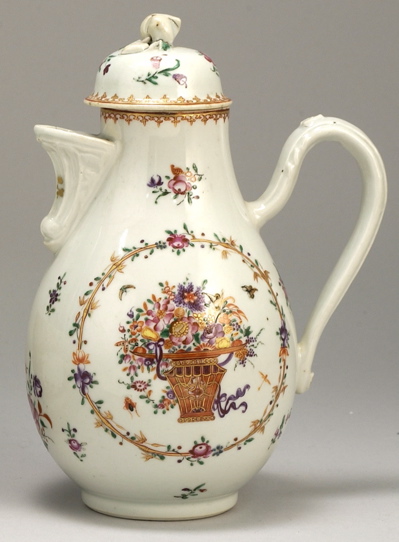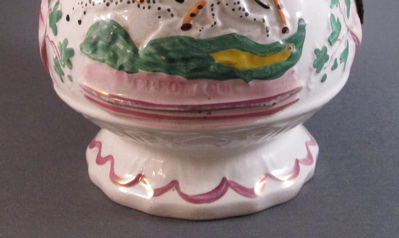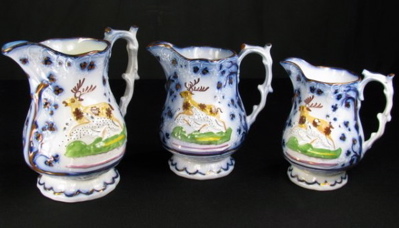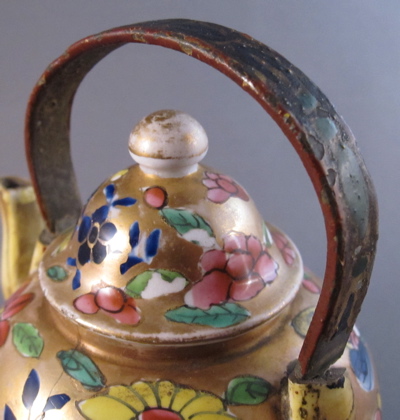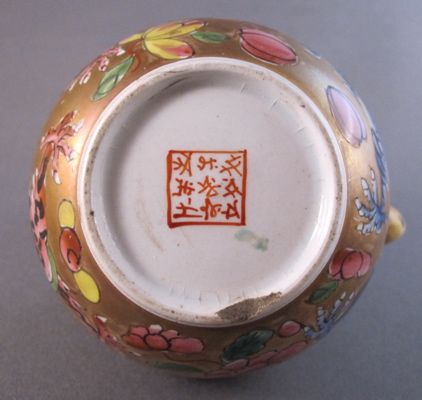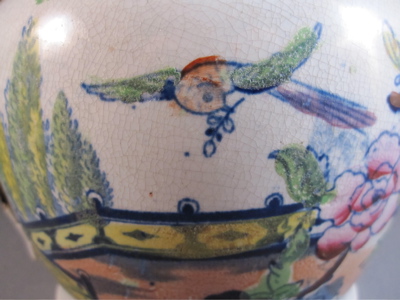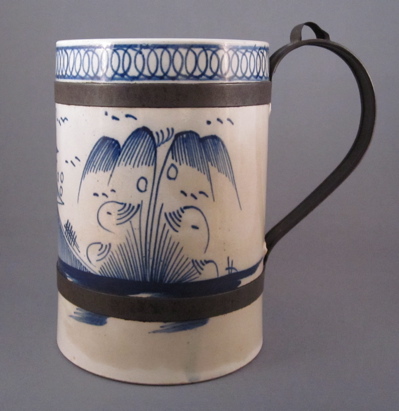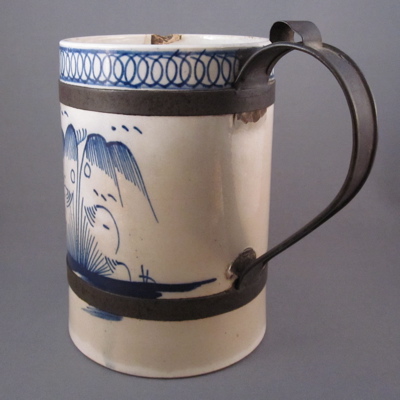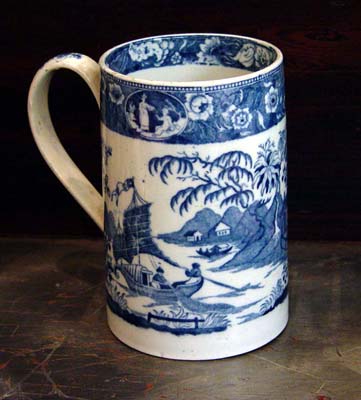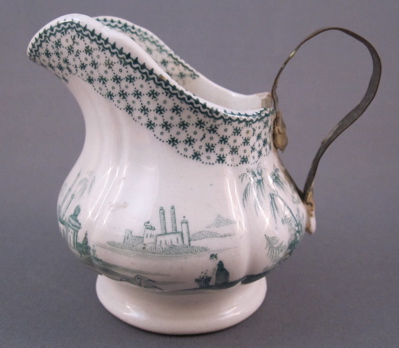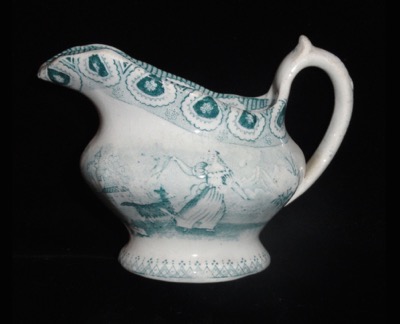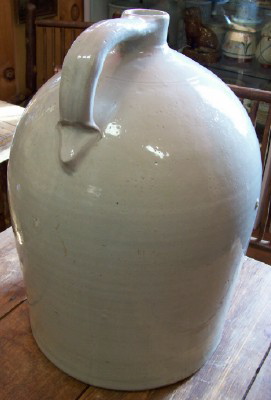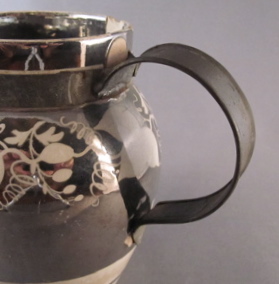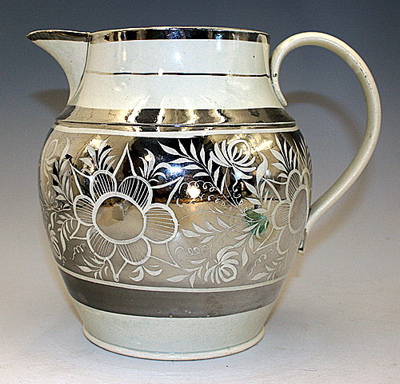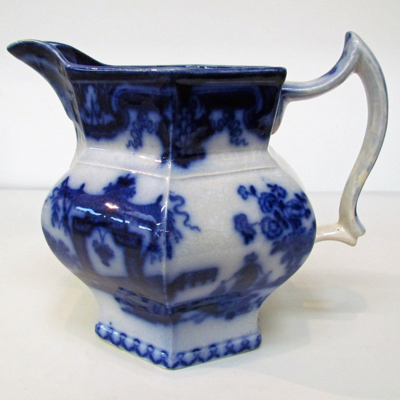Ribbed body ovoid form jug with sparrow beak spout is made of porcelain and has finely painted iron-red & gilt floral and scroll decoration. It was made in China between 1750-90 for export to Europe and North America
Jug stands 7-1/4″ and has sustained much damage over the past 135 years. In addition to the obviously replaced handle, the lid is cracked, chipped and is missing its pomegranate finial
The iron replacement handle is covered in woven rattan, itself in need of repair. There are layers of exposed insulating fabric between the metal and the exterior rattan surfaces
Twine was used to tie the lid to the handle, a practical yet unattractive way of keeping these two pieces from separating
This pot shows what the original handle might have looked like
Photo courtesy of Eldred’s




